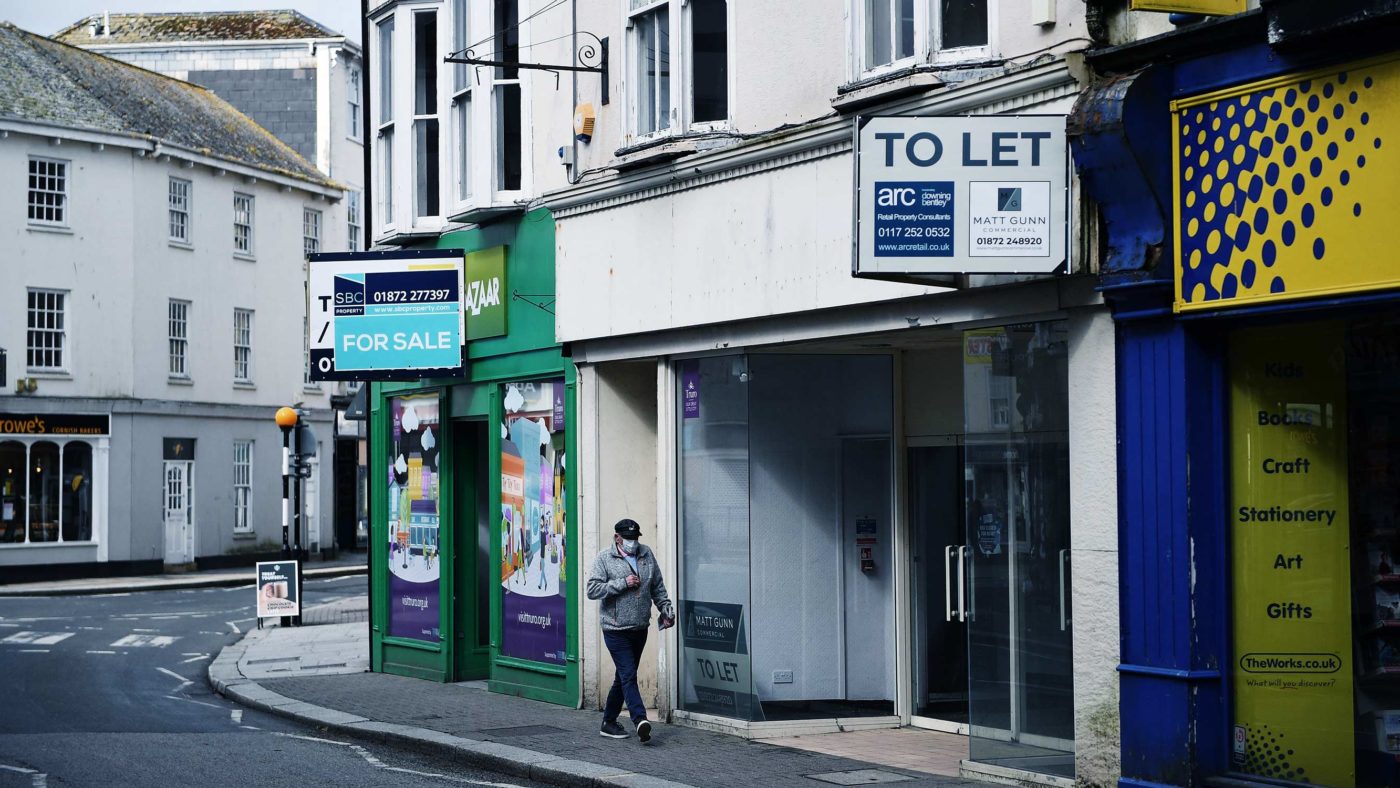Today’s reopening of non-essential retail is very welcome. But the damage that the pandemic has caused to Britain’s shopping malls and high streets is not going to be repaired soon, if ever.
We know that households have accumulated significant savings during lockdown. According to the Bank of England, private savings accounts were up by £125 billion in 2020, and renewed lockdown in the first part of this year will have added to this. Some optimists have suggested that these savings could spark a spending spree as shops reopen, but this looks unlikely. The Bank itself reckons that, given the uncertainty we all face, people are going to hang on to the bulk of these savings for the time being.
There is sadly very little to tempt shoppers back. For the first week or so, the novelty may bring some people out, especially if the sun shines. But the high street will be a greatly reduced attractor, with many chains disappearing and the closure of anchor retailers such as Debenhams, John Lewis and Marks & Spencer leaving depressing gaps in many towns. The immediate prospect in many places is more boarded-up premises and a further proliferation of charity shops.
Moreover in the short run shoppers face continuing Covid-related restrictions, with social distancing and compulsory masks, the inability to try on clothing in stores such as Primark and M & S, queues for everything, and ‘no-touching-the-merchandise’ rules in many places.
Government advice is still to shop by yourself rather than with your partner, friends or children. Add to this the absence of the indoor cafes, restaurants, pubs and places of entertainment with which we used to round out the morning or afternoon’s browsing, and shopping is just a faint shadow of the social experience many of us enjoyed in the past. It is simply a utilitarian exercise, a chore.
In any case consumers’ habits have almost certainly changed for good. Even before the pandemic, the British did far more shopping on the internet than other European countries, and the habit has grown rapidly during lockdown.
Online sales rose by nearly 75% over the year to January, and now account for more than a third of all retail. It is difficult to see this trend being reversed. Online has grown fastest during lockdown amongst the most conservative group, the over-65s, who had previously been the mainstay of traditional retailing.
For all but the most intrepid shopper, it will surely be far better to continue ordering stuff from Amazon while watching Netflix with a nice cup of tea, and without having to wear a mask and face glaring security guards everywhere.
Even when (if?) Covid restrictions are eventually dropped, the prospects for the high street will remain distinctly unpromising. Another threat is the growing distaste for commuting and office work. Should home working continue at higher levels post-pandemic, there will be permanent changes in town and city centres.
Centre for Economic Policy researchers have coined the word ‘Zoomshock’ to draw attention to some of the wider effects of people working at home. They point to the considerable amounts of ‘locally consumed services’ on which office workers spend – coffee shops, restaurants, after-work drinks and meals, gyms, and theatres, as well as retail outlets. Big city centres where retail has long been important could potentially be hit badly. In the extreme, if everybody who could do so worked at home permanently, 75% of workers in the City of London and around 25% in Manchester, Cambridge and Newcastle would abandon their offices.
This is not going to happen, but even if half of commuters work at home two days a week, this alone means a 20% drop in potential demand for city-centre retailers.
Traditional retailing is facing a crisis which lockdown has partially masked. To give bricks-and-mortar any chance, the Government must accelerate the scrapping of all Covid restrictions. It should also end business rates, which have always been an unsatisfactory form of taxation as they are based on property value, not business income.
But it must also make it easier to repurpose many high street buildings. A smaller and more focused retail sector could thrive on our high streets if other activities going on around it maintained and increased footfall.
This may involve some retail space being turned into housing, craft workshops, gyms and other uses rather than being left vacant. Central government and local authorities might usefully relocate key services to former retail space. If footfall can be increased by such measures, some old-style retailing may yet survive. But otherwise the prospects are grim.
Click here to subscribe to our daily briefing – the best pieces from CapX and across the web.
CapX depends on the generosity of its readers. If you value what we do, please consider making a donation.


